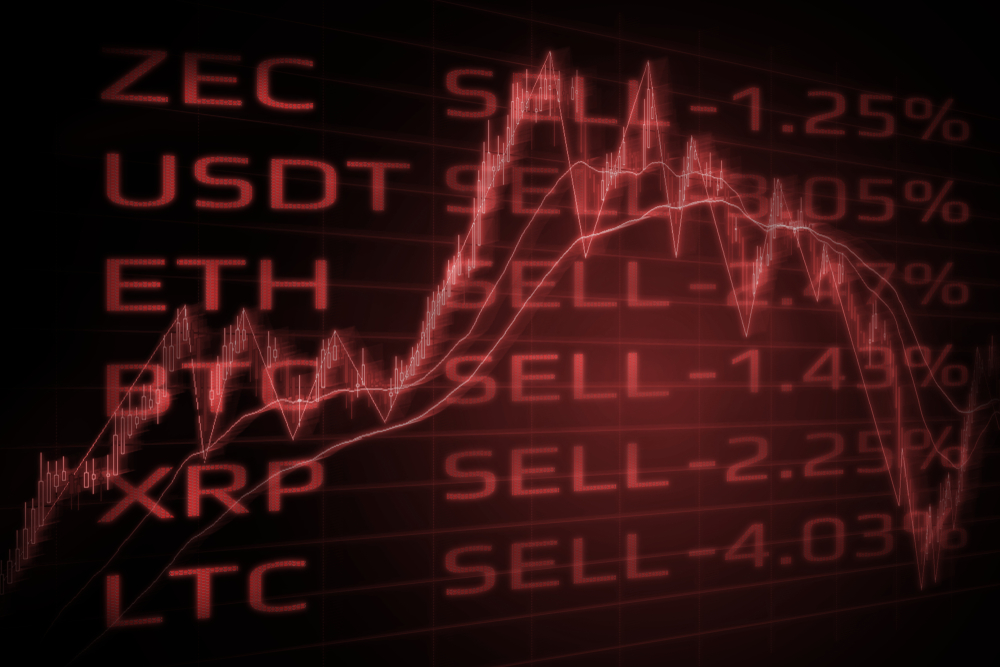The cryptocurrency market is experiencing yet another significant downturn, with many investors alarmed by the sudden drop in prices. The sight of crypto markets crashing today is not unfamiliar, but understanding the reasons behind such sharp declines is essential for both novice and seasoned traders. In this article, we will explore the key factors contributing to crypto market crash today, offering insights into why this is happening and what it means for the future of digital assets.
1. Understanding the Crypto Markets Crashing Today
One of the major drivers of the crypto markets crashing today is the broader global economic instability. Cryptocurrencies, while innovative and often seen as a hedge against traditional financial markets, are not immune to external economic pressures.
Several macroeconomic factors have contributed to the current downturn:
Rising inflation rates: With inflation surging across major economies, central banks are tightening monetary policies by raising interest rates. This makes borrowing more expensive, reducing liquidity in financial markets and leading to a sell-off of high-risk assets like cryptocurrencies.
Recession fears: Many economists are warning of an impending recession in key global markets. The fear of economic downturns has led investors to shift their focus to safer, more stable investments such as bonds and gold, pulling funds away from the crypto market makers list.
Geopolitical tensions: Ongoing conflicts and political instability in regions like Eastern Europe and the Middle East have added to market anxiety. Investors are cautious about taking risks during uncertain times, and this sentiment is reflected in the current sell-offs.
2. Regulatory Pressures on the Crypto Industry
Another significant factor contributing to crypto markets crashing today is the increasing regulatory scrutiny faced by the cryptocurrency industry. Governments and financial regulators across the globe are implementing stricter regulations to curb illicit activities, tax evasion, and money laundering facilitated by digital currencies.
Some key developments in this regard include:
U.S. regulatory clampdown: The U.S. Securities and Exchange Commission (SEC) has ramped up its enforcement of crypto regulations, going after crypto exchanges, initial coin offerings (ICOs), and even decentralized finance (DeFi) platforms. The resulting uncertainty has dampened investor enthusiasm, leading to a sell-off.
China’s continued ban: China has maintained a strict ban on cryptocurrency mining and trading, significantly reducing demand for digital assets in one of the world’s largest markets. This has contributed to reduced liquidity and falling prices across the list of crypto market makers.
European Union regulations: The EU is moving towards more stringent crypto regulations, focusing on investor protection and anti-money laundering (AML) rules. While these efforts aim to legitimize the market, the uncertainty around their implementation has caused investor hesitation.
3. The Role of Market Sentiment and Fear
Cryptocurrency markets are highly sentiment-driven, with emotional reactions often amplifying market movements. A combination of fear, uncertainty, and doubt (FUD) has exacerbated the sell-off, with negative news and rumors fueling panic among investors.
There are several factors amplifying this negative sentiment:
Media coverage: Headlines about scams, exchange hacks, or prominent crypto personalities being charged with fraud have shaken investor confidence. Negative media coverage can trigger a wave of selling as investors try to cut their losses.
Whale sell-offs: Large holders of cryptocurrencies (known as “whales”) often move markets by selling off large portions of their holdings. When whales liquidate their assets, it can lead to a panic sell-off among smaller investors, further exacerbating the crash.
Social media influence: Platforms like Twitter, Reddit, and crypto Telegram marketing play a significant role in spreading rumors and speculative news. When a critical mass of investors reacts to this information, it can create a domino effect, driving down prices across the board.
4. Leveraged Trading and Liquidations
Leveraged trading has also played a critical role in the crypto markets crashing today. Many traders use leverage to increase their exposure to the market, borrowing funds to trade larger positions. However, when the market takes a downturn, those traders with high leverage are often forced to liquidate their positions to meet margin calls.
This cascade of liquidations further drives down prices, creating a feedback loop:
Margin calls and forced selling: When the price of a cryptocurrency drops, leveraged traders must either add more collateral or sell their positions to avoid liquidation. If they are unable to meet their margin requirements, the exchange automatically sells off their assets, causing prices to fall even further.
Cascading liquidations: As more leveraged traders are liquidated, the downward pressure on the market intensifies. This often results in sharp, rapid price declines that can wipe out significant portions of the market’s value in a matter of hours.
5. External Factors and Technological Challenges
Finally, external factors such as technological failures, exchange outages, and security breaches can also contribute to market instability. In some cases, large exchanges experiencing technical issues or hacks can lead to a temporary loss of investor confidence, causing sell-offs.
Conclusion
In conclusion, the crypto markets crashing today can be attributed to a combination of global economic instability, regulatory pressures, negative market sentiment, and leveraged liquidations. While these factors may seem daunting, it’s important for investors to stay informed and remain cautious during times of market volatility. Understanding the reasons behind the crash can help traders make more informed decisions and prepare for the market’s inevitable recovery in the future.


